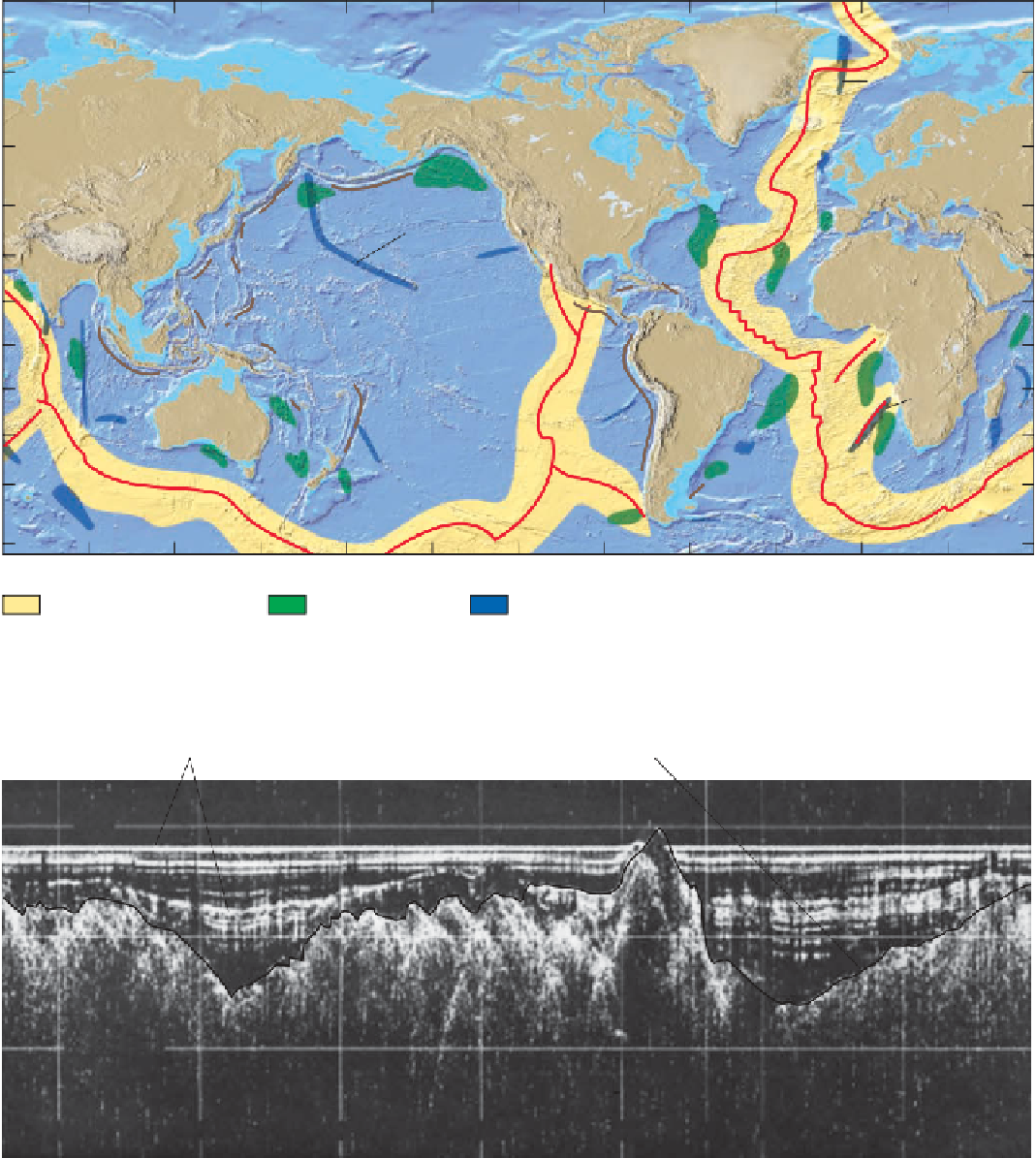Geology Reference
In-Depth Information
submarine fans. Along active continental margins, sediments
derived from the shelf and slope are trapped in an oceanic
trench, and abyssal plains fail to develop. Accordingly, abys-
sal plains are common in the Atlantic Ocean basin, but rare
in the Pacifi c Ocean basin (Figure 9.10).
fl attest, most featureless areas on Earth (
Figure 9.10). Their
fl atness is a result of sediment deposition covering the rug-
ged topography of the seafl oor (
◗
Figure 9.11).
Abyssal plains are invariably found adjacent to con-
tinental rises, which are composed mostly of overlapping
◗
90°
120°
150°
180°
150°
120°
90°
60°
30°
0°
30°
60°
75°
75°
Jan Mayen
Ridge
60°
60°
45°
45°
Hawaiian-
Emperor
Chain
30°
30°
15°
15°
0°
15°
15°
Walvis
Ridge
30°
30°
45°
45°
n
90°
120°
150°
180°
150°
120°
90°
60°
30°
0°
30°
60°
60°
Oceanic ridge system
Abyssal plain
Aseismic ridge
Rift valley
Oceanic trench
◗
Figure 9.10
Deep Seafl oor Fractures Features found on the deep seafl oor include oceanic trenches
(brown), abyssal plains (green), the oceanic ridge system (yellow), rift valleys (red), and some aseismic
ridges (blue). Other features such as seamounts and guyots are shown in Figure 9.14. Source: From
Alyn and Alison Duxbury,
An Introduction to the World's Oceans
. Copyright 1984 McGraw-Hill.
Layers of sediment
Oceanic crust
2800
(5120 m)
3600 fathoms
(6583 m)
16 km
Oceanic crust
◗
Figure 9.11
Rugged Seafl oor Topography Seismic profi le showing rugged seafl oor topography
covered by sediments of the Northern Madeira Abyssal Plain in the Atlantic Ocean. Source: From
Bruce E. Heezen and Charles D. Hollister,
The Face of the Deep
(New York: Oxford University Press,
1971), Figure 8.38, page 329.




Search WWH ::

Custom Search